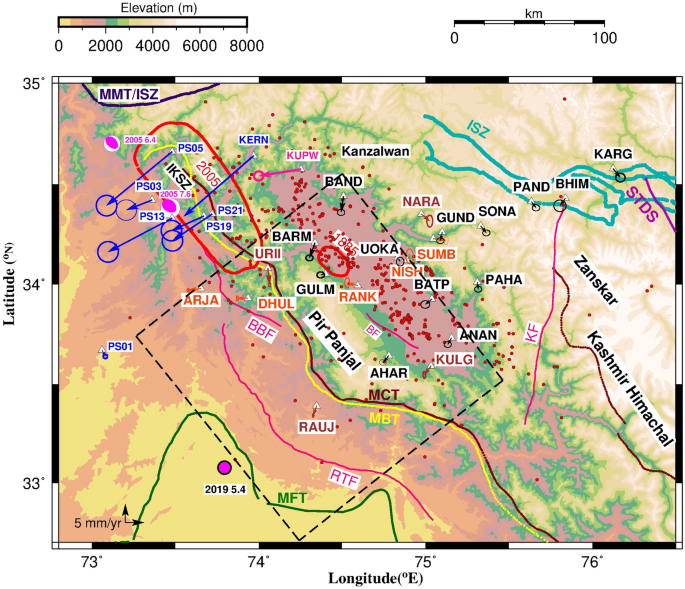
Reading the Tectonic Clock in Kashmir
We must learn how to use the tectonic clock in our favour to avert devastating earthquakes
By : Dr Afroz Ahmad Shah
Earthquakes occur when rocks fail to accommodate stress. Initially, rocks will deform and try to compensate for stress, which usually results in topographic changes such as uplift, subsidence etc. Once the stress exceeds what rocks can accommodate, they strain and eventually break. The sequence of earthquakes in the Jammu and Kashmir region should be experiencing strain release, which tells us that rocks are at a stage where breaking is possible. I have checked the depth of faulting, and it seems the rocks are breaking at 5 to 10 km depth, which is very shallow, and if it forms a significant fault, it could be dangerous.
Unfortunately, we do not know the type of faulting because of the small size of the quakes. However, the pattern of earthquake occurrence in the south of the Kashmir Basin is a reflection of internal faulting, which means that such earthquakes could be associated with faults other than the major Himalayan faults, such as the Himalayan Frontal thrust, Main Boundary fault, etc. It is good news because the maximum size of an earthquake on the fault that would accommodate the ongoing earthquakes in the J and K regions should not exceed magnitude 8.0 and would ideally be expected to fall between 6.0 and 7.0. If it reaches 7.0 and 7.5, it will cause considerable damage in the region, potentially cascading into a series of other issues such as landslides, floods, liquefaction, and so on.
Earthquakes in our part of the world are happening because of the ongoing collision between India and Eurasia, two continental plates that started their journey to collide a long time back. Therefore, no one can stop them from collisions, humans can not do that, and we have no technological advancement to stop it. Actually, stopping collisional tectonics would create more problems than solutions, which we can discuss later in another post. Therefore, we cannot stop earthquakes from coming; they will come, only time is unknown. I think that unknown time is a clock for us which is ticking. If we do not understand how to respond to the time given to us by the natural clock of faulting, we will turn a hazard into a major disaster, which will be our failure as a scientific, social, and responsible community.
Assuming there will be a big earthquake in the coming days, what could we do? Nothing much. Our houses are a pack of cards with no structural integrity to withstand ground shaking, which will become a catastrophe. We are not ready to face a big earthquake, which is something we should think about, and it should give us sleepless nights until we find a way to deal with it.
It is a challenge for all of us, and we have to solve it together. How?
Let us start. The administration can draft a possible document where auditing of buildings will be done within a few months, and action-oriented planning will follow the auditing procedures to ensure what needs to be done to prepare the region for significant earthquakes. It should ideally involve a committee on earthquake hazards, which will work on one goal, how to stop an earthquake from becoming a disaster. It is possible, and we have all the resources to do it, but what it needs is a will, which is where we are lacking.
We have to first draft in our mind a solution on how to live with earthquake hazards. It is where the will is needed; once we have it, the road towards achieving that goal will come nearer. As I said earlier, tectonic interaction between India and Eurasian plates gives us time to reflect, and if we don’t, it will turn our region into what we saw in the neighbouring Muzaffarabad in the 2005 earthquake. Therefore, we must learn how to use the tectonic clock in our favour.

